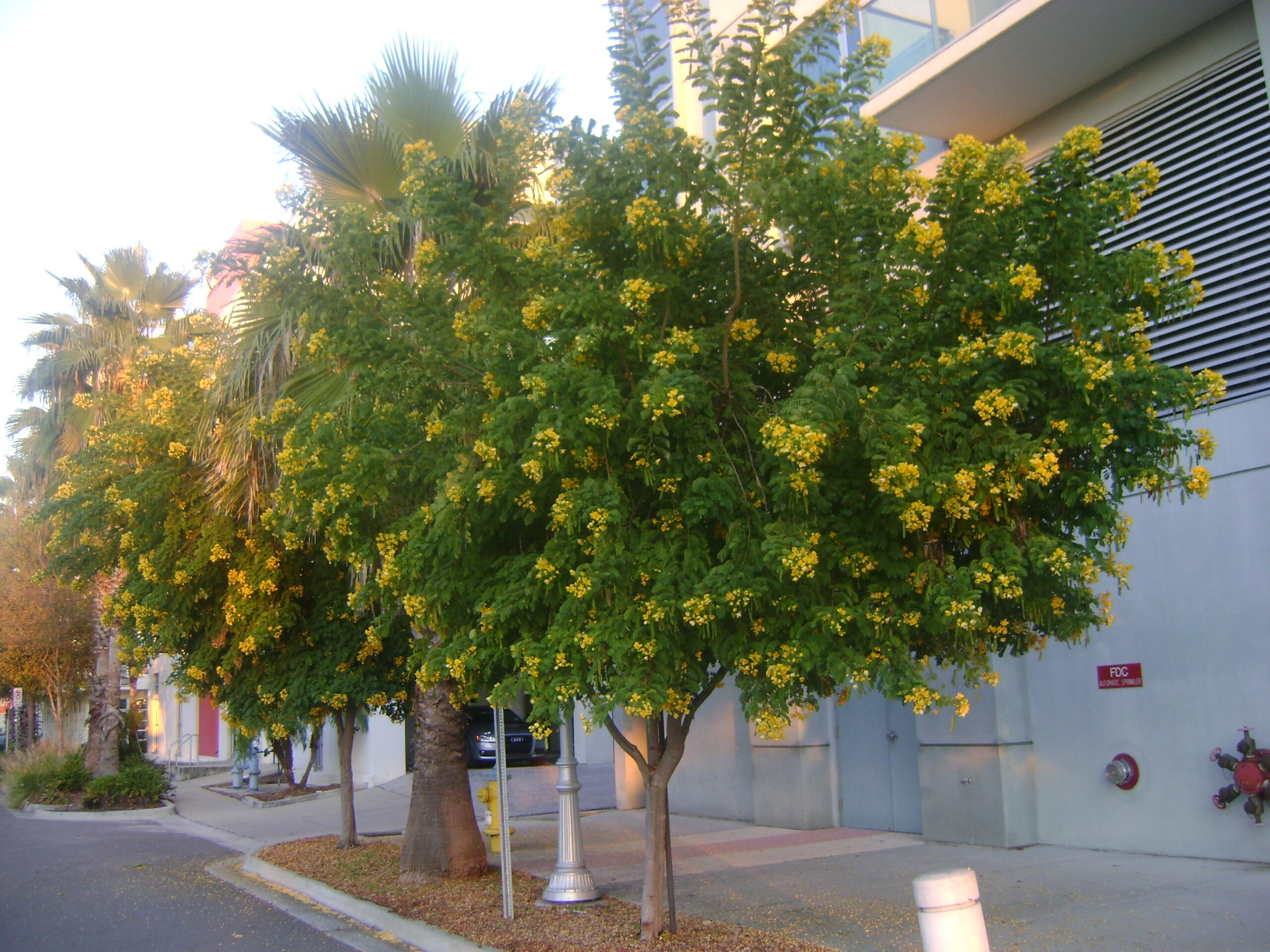Among the many advantages of living in Florida is a climate that allows a wide variety of flowering trees to grow and thrive. Transform your home into a tropical paradise with a beautiful blooming Cassia tree.
The fast growing Cassia tree can eventually reach 40 feet in height with a canopy of equal width. The crown may be irregular and rounded or upright and shaped like a vase. The leaves are composed of pale green, alternately arranged leaflets that are four to eight inches in length and have a delicate, lacy appearance. The brilliant blooming begins in late spring to early summer. Flowers are large, up to three inches across, waxy and bright lemon yellow with contrasting orange centers. They appear in trailing grape-like clusters that are up to 15 inches long. The Cassia often drops its leaves in preparation for flowering, and the blossoms that cover the entire tree create the illusion of a floating yellow cloud. Later in the year, the Cassia may flower again, slightly less exuberantly and while retaining its foliage. The blossoms are popular with birds, bees and butterflies. Flowers are followed by long, bean-like seedpods, which may linger on the tree through the winter months. The seeds contained within are poisonous if ingested. The Cassia is a deciduous tree, and you can expect it to be free of both foliage and flowers for a short period during the year.
Cassia is drought and wind resistant. It prefers bright, sunny locations and grows well in both sandy and rocky well-drained soils. Water needs are moderate once the tree is established. Seldom bothered by pests or diseases, the Cassia may be damaged by temperatures that drop below freezing, but it will make a full recovery with the return of warmer weather. Cassia is prone to irregular branches and selective pruning of young trees may be necessary to develop a strong structure.
The Cassia’s brilliant display of seasonal color makes it ideally suited for planting as a specimen tree in front yards or along streets and avenues where its spectacular show will catch the eye of visitors or passers-by.

